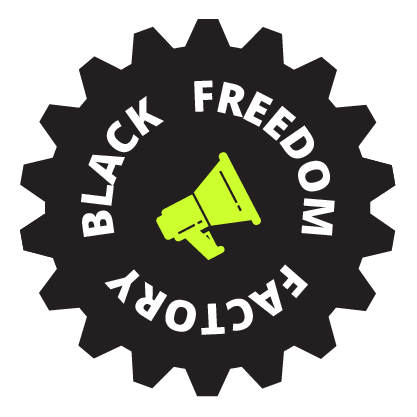Please Read
DHS has announced processes through which nationals of Cuba, Haiti, Nicaragua, and Venezuela, and their immediate family members, may request to come to the United States in a safe and orderly way.
Qualified beneficiaries who are outside the United States and lack U.S. entry documents may be considered, on a case-by-case basis, for advanced authorization to travel and a temporary period of parole for up to two years for urgent humanitarian reasons or significant public benefit. To participate, eligible beneficiaries must:
- Have a supporter in the United States
- Undergo and clear robust security vetting
- Meet other eligibility criteria
- Undergo and clear robust security vetting
Individuals participating in these processes must have a supporter in the United States who agrees to provide them with financial support for the duration of their parole in the United States. The first step in the process is for the U.S.-based supporter to file a Form I-134A, Online Request to be a Supporter and Declaration of Financial Support, with USCIS for each beneficiary they seek to support, including minor children. The U.S. government will then review the supporter information provided in the Form I-134A to ensure that they are able to financially support the beneficiaries they are agreeing to support.
Form I-134A to apply to be a sponsor: https://www.uscis.gov/i-134a
Eligibility
An individual who holds lawful status in the United States or is a parolee or beneficiary of deferred action or Deferred Enforced Departure (DED) who has passed security and background vetting and demonstrated sufficient financial resources to receive, maintain, and support the individual (s) whom they commit to supporting for the duration of their stay in the United States.
Supporter
Examples of individuals who meet the supporter requirement include:
- U.S. citizens and nationals
- Lawful permanent residents, lawful temporary residents, and conditional permanent residents
- Nonimmigrants in lawful status (who maintain their nonimmigrant status and have not violated any of the terms or conditions of their nonimmigrant status)
- Asylees, refugees, and parolees
- Individuals granted Temporary Protected Status (TPS); and Beneficiaries of deferred action (including deferred action for childhood arrivals) or DED
Beneficiary
A national of Cuba, Haiti, Nicaragua, or Venezuela (or their immediate family member of any nationality) who is outside the United States and who may be considered for parole under these processes.
Immediate family members of any nationality in these processes include:
- A spouse or common-law partner; and
- Unmarried child(ren) under the age of 21. NOTE: If a child is under 18, they must be traveling with a parent or legal guardian in order to use this process
Who can be a Sponsor?
To serve as a supporter, an individual or individual representing an entity must:
- Be a U.S. citizen, national, or lawful permanent resident; hold a lawful status in the United States such as Temporary Protected Status or asylum; or be a parolee or recipient of deferred action or Deferred Enforced Departure
- Pass security and background vetting, including for public safety, national security, human trafficking, and exploitation concerns; and
- Demonstrate sufficient financial resources to receive, maintain, and support the individual(s) they are agreeing to support for the duration of their parole period
Supporters who file Form I-134A on behalf of a beneficiary under these processes must be willing and able to receive, maintain, and support the beneficiary listed in Form I-134A for the duration of their parole. Examples of the types of support for beneficiaries that supporters should keep in mind when considering their ability to meet this commitment include:
- Receiving the beneficiary upon arrival in the United States and transporting them to initial housing
- Ensuring that the beneficiary has safe and appropriate housing for the duration of their parole and initial basic necessities
- As appropriate, helping the beneficiary complete necessary paperwork such as for employment authorization, for a Social Security card, and for services for which they may be eligible
- Ensuring that the beneficiary’s health care and medical needs are met for the duration of the parole
- As appropriate, assisting the beneficiary with accessing education, learning English, securing employment, and enrolling children in school
Supporters must file a separate Form I-134A for each beneficiary, even minor children.
communitysponsorshiphub.org was established as a resource for those who apply to become a Sponsor to provide guidance and resources.
Process Steps
Beneficiaries cannot directly apply for these processes. A supporter in the United States must first complete and file Form I-134A with USCIS on behalf of a beneficiary and include information about them and contact details, such as an email address. If we deem the Form I-134A sufficient, in our discretion, we will send the beneficiary information about the next step in the process to be considered for authorization to travel to the United States and parole consideration at an airport of entry.
Once beneficiaries receive their travel authorization, they should arrange to fly directly to their final destination in the United States. Upon arrival at the interior port of entry, individuals will be inspected by CBP and required to submit additional information, to include fingerprints, for further biometric vetting, and then be considered for a discretionary grant of parole. Those who attempt to enter the U.S. at land ports of entry will not be considered for parole through this process and will generally be denied entry.
The key steps in the processes include:
Step 1: Financial Support
- A U.S.-based supporter will submit a Form I-134A, Online Request to be a Supporter and Declaration of Financial Support, with USCIS through the online myUSCIS web portal to initiate the process. The Form I-134A identifies and collects information on both the supporter and the beneficiary. The supporter must submit a separate Form I-134A for each beneficiary they are seeking to support, including immediate family members and minor children.
- USCIS will then vet the supporter to ensure that they are able to financially support the individual they are agreeing to support and to protect against exploitation and abuse. USCIS, in our discretion, must vet and confirm supporters before they move forward in the process.
Step 2: Submit Biographic Information
- If USCIS confirms a supporter, the listed beneficiary will receive an email from USCIS with instructions on how to create a USCIS online account and other next steps. The beneficiary must confirm their biographic information in myUSCIS and attest to meeting the eligibility requirements.
- As part of confirming eligibility in their online account, individuals who seek authorization to travel to the United States must confirm that they meet public health requirements, including certain vaccination requirements.
Step 3: Submit Request in CBP One Mobile Application
- After confirming biographic information in their online account and completing required eligibility attestations, the beneficiary will receive instructions through myUSCIS on how to access the CBP One mobile application (PDF, 771.55 KB). The beneficiary must enter their biographic information into CBP One and provide a photo.
Step 4: Advance Travel Authorization to the United States
- After completing Step 3, the beneficiary will receive a notice in their online account confirming whether CBP will, in its discretion, provide them with advance authorization to travel to the United States to seek a discretionary grant of parole on a case-by-case basis.
- If approved, this authorization is valid for 90 days. Beneficiaries are responsible for securing their own travel via air to the United States. Approval of advance authorization to travel does not guarantee entry or parole into the United States at a U.S. port of entry. Parole is a discretionary determination made by CBP at the port of entry, based on a finding that parole is warranted due to urgent humanitarian reasons or significant public benefit.
Step 5: Seeking Parole at the Port of Entry
- When a beneficiary arrives a port of entry, CBP will inspect them and consider them for a grant of discretionary parole on a case-by-case basis.
- As part of the inspection, beneficiaries will undergo additional screening and vetting, to include additional fingerprint biometric vetting consistent with the CBP inspection process. Individuals who are determined to pose a national security or public safety threat, or otherwise not warrant parole as a matter of discretion upon inspection, will be processed under an appropriate processing pathway and may be referred to U.S. Immigration and Customs Enforcement (ICE).
Step 6: Parole
- Individuals granted parole under these processes generally will be paroled into the United States for a period of up to two years, subject to applicable health and vetting requirements, and will be eligible to apply for employment authorization under existing regulations.
- Individuals granted parole may request work authorization from USCIS by filing a Form I-765, Application for Employment Authorization, either online or via mail.
CBP one mobile application: https://www.uscis.gov/sites/default/files/document/guides/CBP_One-QRG-Traveler-Air-Advance_Travel_Authorization.pdf
Form I-765 Application for Employment Authorization: https://www.uscis.gov/i-765


